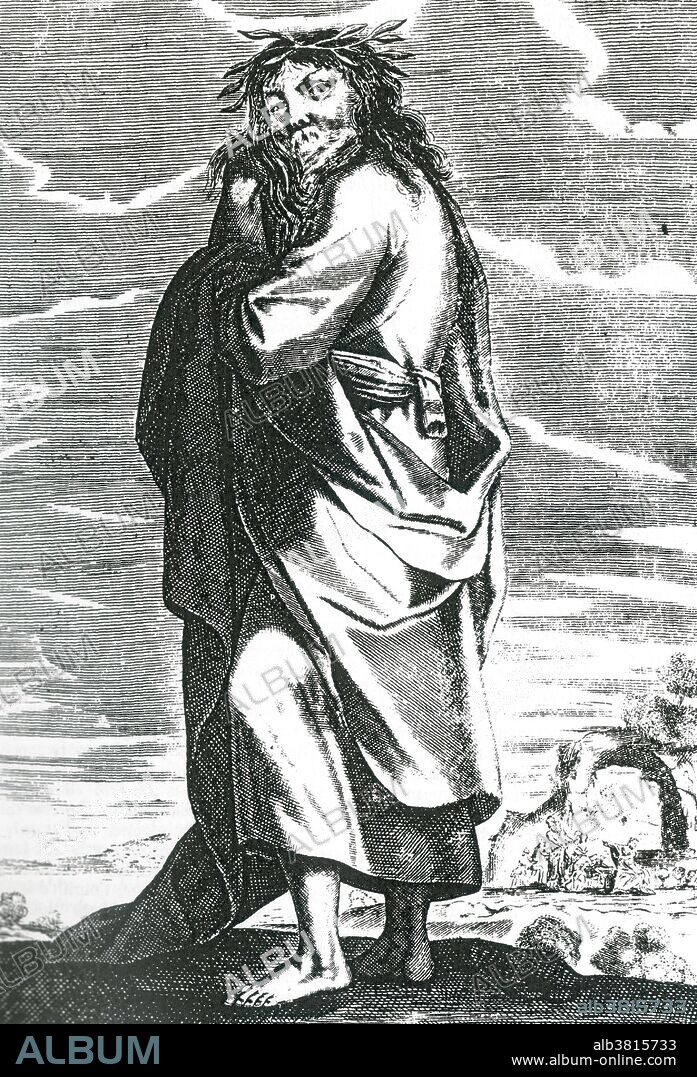alb3815733
Thales of Miletus, Sage of Greece

|
Add to another lightbox |
|
Add to another lightbox |



Title:
Thales of Miletus, Sage of Greece
Caption:
Thales of Miletus (624-546 BC) was a pre-Socratic Greek philosopher, mathematician, astronomer, the first identifiable scientist and one of the Seven Sages of Greece. Thales attempted to explain natural phenomena without reference to mythology and was tremendously influential in this respect. Thales' rejection of mythological explanations became an essential idea for the scientific revolution. In mathematics, Thales used geometry to solve problems such as calculating the height of pyramids and the distance of ships from the shore. He is credited with the first use of deductive reasoning applied to geometry, by deriving four corollaries to Thales' Theorem. As a result, he has been hailed as the first true mathematician and is the first known individual to whom a mathematical discovery has been attributed. He is reported to have predicted a solar eclipse in 585 BC, and tried to explain earthquakes. Engraving from "The History of Philosophy" by Thomas Stanley published in three successive volumes between 1655 and 1661.
Credit:
Album / Science Source
Releases:
Model: No - Property: No
Rights questions?
Rights questions?
Image size:
2859 x 4200 px | 34.4 MB
Print size:
24.2 x 35.6 cm | 9.5 x 14.0 in (300 dpi)
Keywords:
546 • 624 • 6TH CENTURY BC • 6TH CENTURY BCE • 7 SAGES OF GREECE • 7 WISE MEN • 7TH BCE • 7TH CENTURY B. C. • ANCIENT GREEK • ANCIENT • ANTIQUITY • APPLIED GEOMETRY • ART • ARTWORK • ASTRONOMER • BW • CELEBRITY • CLASSICAL • DEDUCTIVE REASONING • DRAWING • ENGRAVING • FAMOUS • FIGURE • FIRST IDENTIFIABLE SCIENTIST • FIRST TRUE MATHEMATICIAN • GREEK • HISTORIC • HISTORICAL • HISTORY OF PHILOSOPHY • HISTORY • ILLUSTRATION • IMPORTANT • MALE • MAN • MATHEMATICAL • MATHEMATICIAN • MEN • NOTABLE • PEOPLE • PERSON • PERSONALITIES • PERSONALITY • PHILOSOPHER • POLYMATH • PORTRAIT • POTRAIT • PRE-SOCRATIC • SAGE OF GREECE • SCIENCE • SCIENTIFIC REVOLUTION • SEVEN SAGES OF GREECE • SEVEN WISE MEN • THALES OF MILETUS • THALES THEOREM • THALES • THOMAS STANLEY • WELL-KNOWN • WESTERN PHILOSOPHY • WISDOM • WISE MAN • WISEMAN
 Pinterest
Pinterest Twitter
Twitter Facebook
Facebook Copy link
Copy link Email
Email

